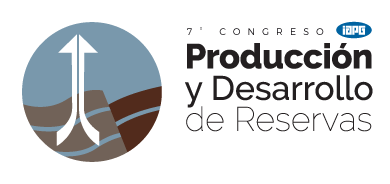Pre-Congress Courses
Enhanced Oil Recovery (EOR) in Conventional and Unconventional Reservoirs
Members: USD 200 - Non-members: USD 240
Sheraton Hotel, Mar del Plata
November 5, 9:00 am - 5:00 pm.
Registration Form
Introduction
Most Petroleum Engineering universities in Argentina do not include ‘Tertiary Recovery’ as a subject; only some faculties have recently incorporated optional subjects or postgraduate studies that include topics related to Tertiary Recovery. In other words, our Reservoir Engineers have no academic formation on Tertiary compared to the formation they have received on Secondary Recovery. Less than 1% of them have experience in the implementation of a polymer injection pilot and future expansions.
Eighty-five percent (85%) of the oil production comes from conventional reservoirs, which have more than 90% of water. The future of conventional oil reserves in Argentina depends on Tertiary Recovery. Until now, between 20 and 30% of the OOIP (Original Oil in Place) has been extracted; there is still 70 to 80% in the subsurface, which can be extracted by secondary (only an extra 10%) or tertiary recovery (between 20 and 40%).
As regards unconventionals, only 7% of OOIP would be extracted - in the best of cases- and if Tertiary with Huff-and-Puff process (CO2 or CH4) were used, a final recovery of 10% would be achieved. However, our country’s experience in that regard is zero. In the USA, there are 12 companies carrying out pilot projects and only 1 company doing an expansion.
It is time to START THINKING ABOUT TERTIARY RECOVERY.
Program
Morning
1. Why EOR?
2. Considerations when designing a pilot project:
a- Acreage reduction program.
b- Cleanup of perforations in injectors and producers involved in the pilot.
c- Conformance of chemical injectors.
d- Standard curve .
e- Water for pilot operations and future expansions.
3. Limitations in the use of polymers, surfactants and alkali.
4. When to consider the use of CO2.
5. Different methods for on-site CO2 generation.
6. Reserves progression with EOR.
7. Royalty reductions for Tertiary Recovery Projects.
Lunch break
Afternoon
1. Production forecasts.
2. Measures being taken in Texas in view of the non-compliance of initial forecasts:
a) New wells: CO2-energized fracturing to eliminate damage caused by water.
b) Depleted wells: EOR pilots (‘Huff-and-Puff’ with cyclic CH4 and CO2 injection) of 12 operators.
3. EOR experience for unconventional in Argentina.
4. On-site CO2 generation.
5. Considerations for EOR pilot project design in unconventional reservoirs.
6. Reserves progression with EOR.
7. Royalty reductions for Tertiary Recovery Projects.
Instructor
Raúl Puliti
Raúl Puliti is a Petroleum engineer, who has worked for 40 years in the oil and gas extraction industry. He worked and contributed to the creation of three Argentine companies: Bridas (Today, Pan American Energy), Perez Companc (Today, Pampa Energía) and Pluspetrol.
At present, Raul is part of WEOR consulting firm, which focuses on Secondary and Tertiary Recovery.
Raúl specializes in Reservoir Engineering; he is the person in charge of creating, designing and implementing an Enhanced Oil Recovery (EOR) project. His knowledge of well completion, specifically on hydraulic fracturing, production, drilling and surface facilities allowed him to be part of the teams that implemented approximately 20 water injection projects and 1 polymer Injection project (‘El Corcobo’ - Pluspetrol).
Raúl is a leader in Argentina of this new technology known as ‘Tertiary Recovery’, which involves water injection, plus polymers and surfactants, enabling a reserve recovery - in oil reservoirs with water injection (known as conventional) - equal to the one produced until Today. That is between 20 and 40% of Original Oil in Place (OOIP), and in unconventional, this would be an additional 3% of the OOIP in the fractures.
ES


